Two-Dimensional Shallow-Water Model with Porosity for Urban Flood Modeling †
Abstract
:1. Introduction
2. Material and Methods
2.1. Mathematical Model
2.2. Numerical Methods
3. Results and Discussion
3.1. Dam Break with Constant Porosity
3.2. Dam Break with Variable Porosity
4. Conclusions
References
- Defina, A.; D’Alpaos, L.; Mattichio, B. A new set of equations for very shallow water and partially dry areas suitable to 2D numerical domains. In Proceedings of the Specialty Conference ‘Modelling of Flood Propagation over Initially Dry Areas’, Milano, Italy, 29 June–1 July 2004. [Google Scholar]
- Hervouet, J.-M.; Samie, R.; Moreau, B. Modelling urban areas in dam-break flood-wave numerical simulations. In Proceedings of the International Seminar and Workshop on Rescue Actions Based on Dambreak Flow Analysis, Seinajoki, Finland, 1–6 October 2000. [Google Scholar]
- Soares-Frazão, S.; Lhomme, J.; Guinot, V.; Zech, Y. Two-dimensional shallow-water model with porosity for urban flood modelling. J. Hydraul. Res. 2008, 46, 45–64. [Google Scholar] [CrossRef]
- Vazquez-Cendon, M.E. Improved treatment of source terms in upwind schemes for shallow water equations in channels with irregular geometry. J. Comput. Phys. 1999, 148, 497–526. [Google Scholar] [CrossRef]
- Kamal, M. A finite volume method for numerical simulation of shallow water models with porosity. Comput. Fluids 2014, 104, 9–19. [Google Scholar]
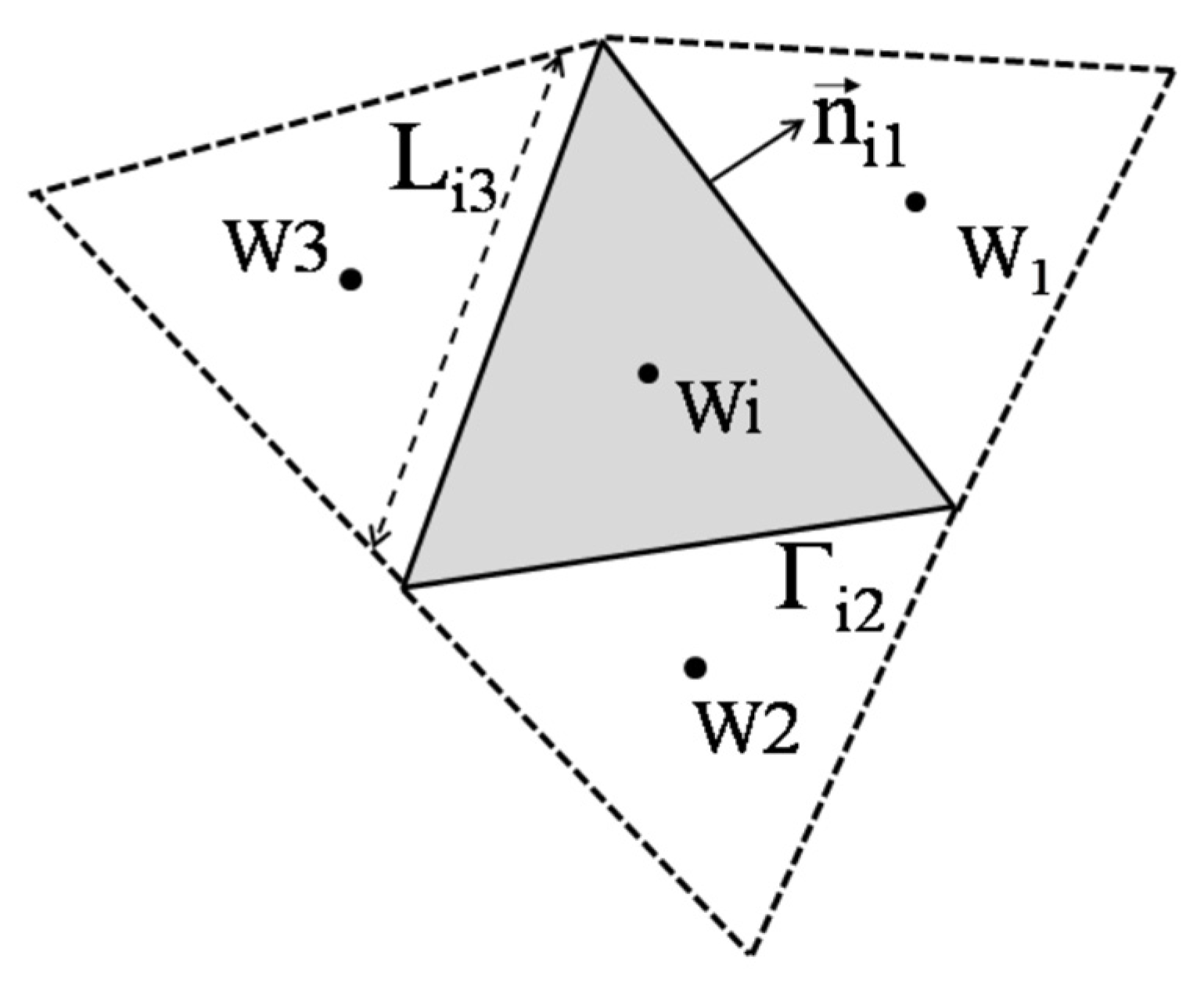
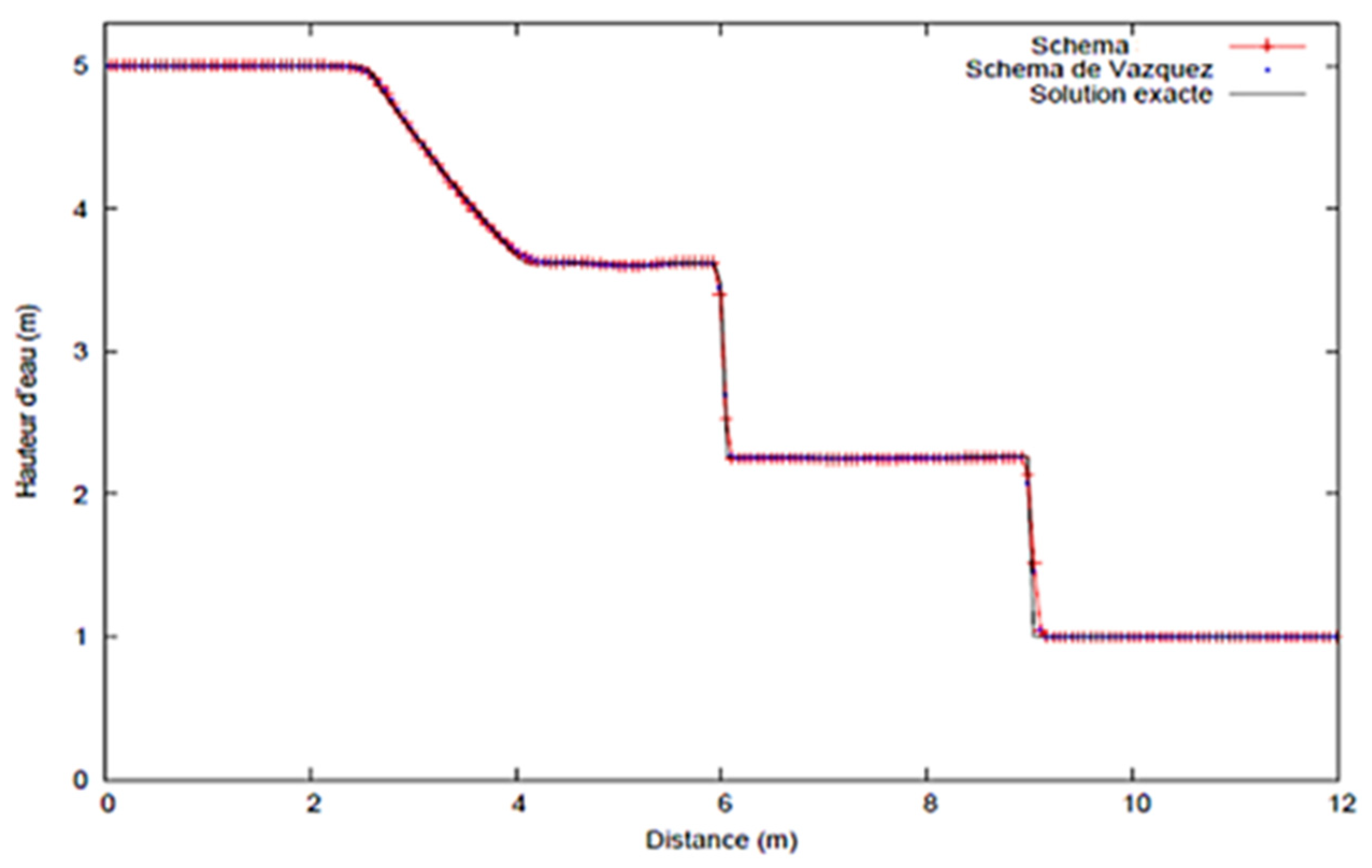
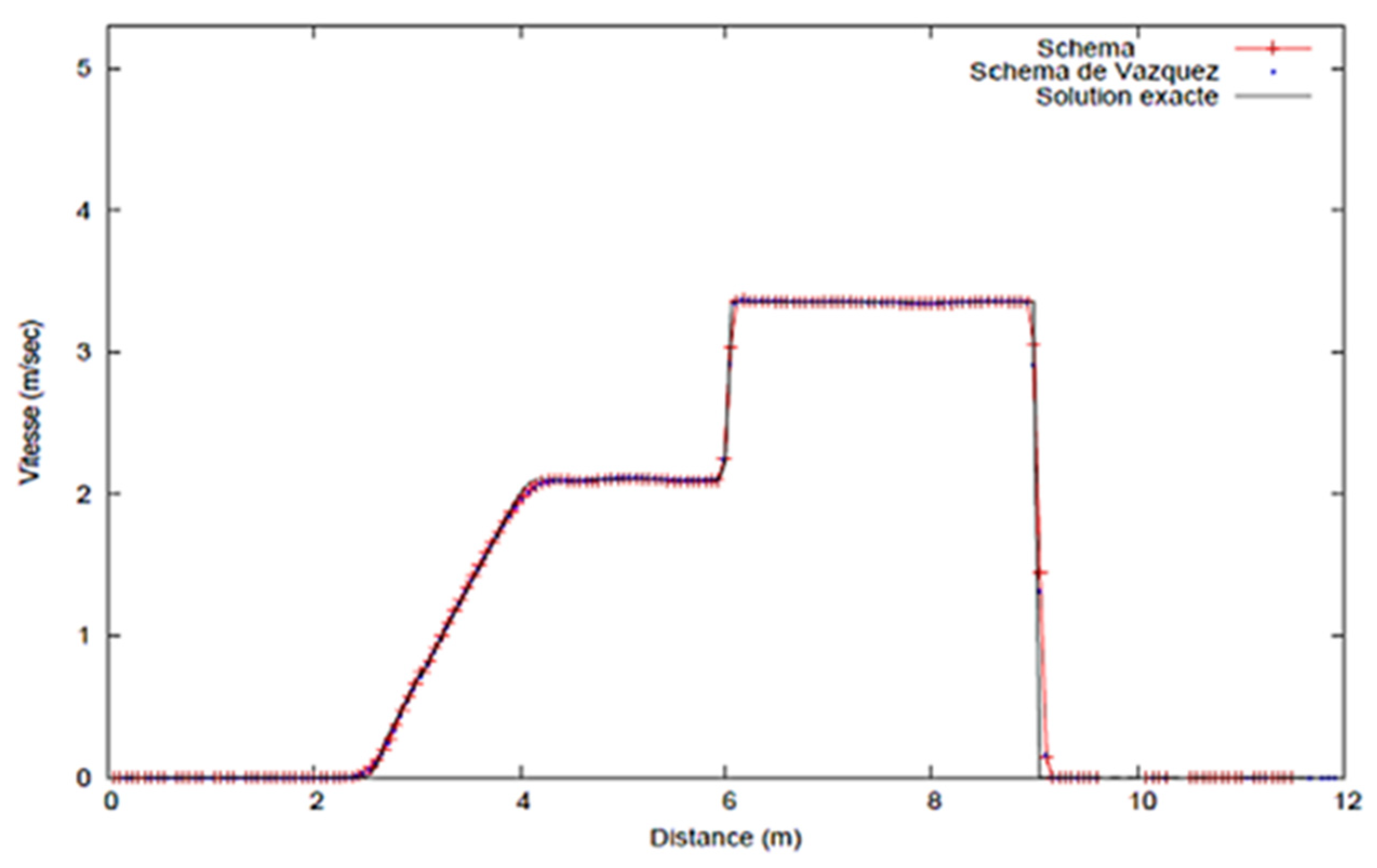
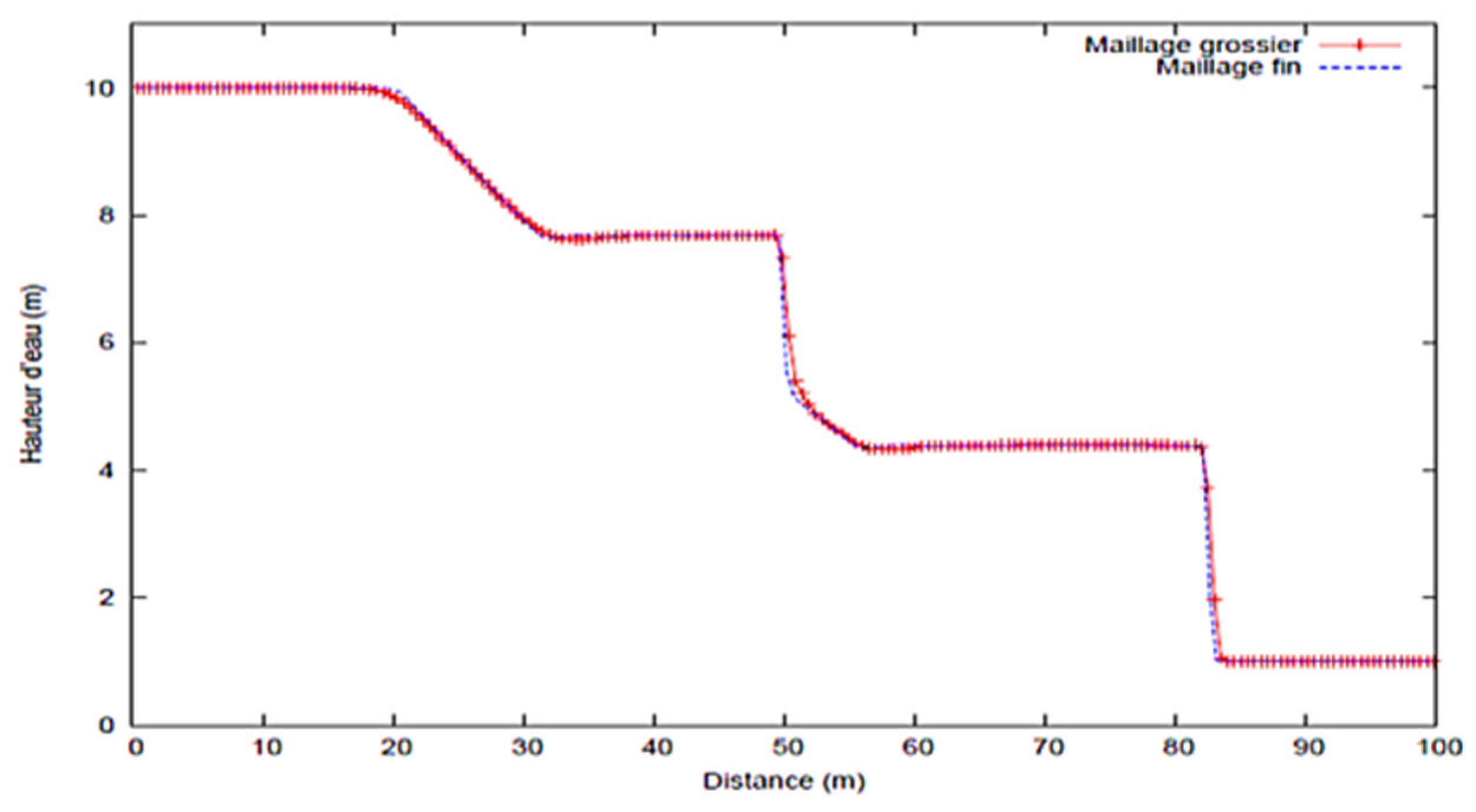
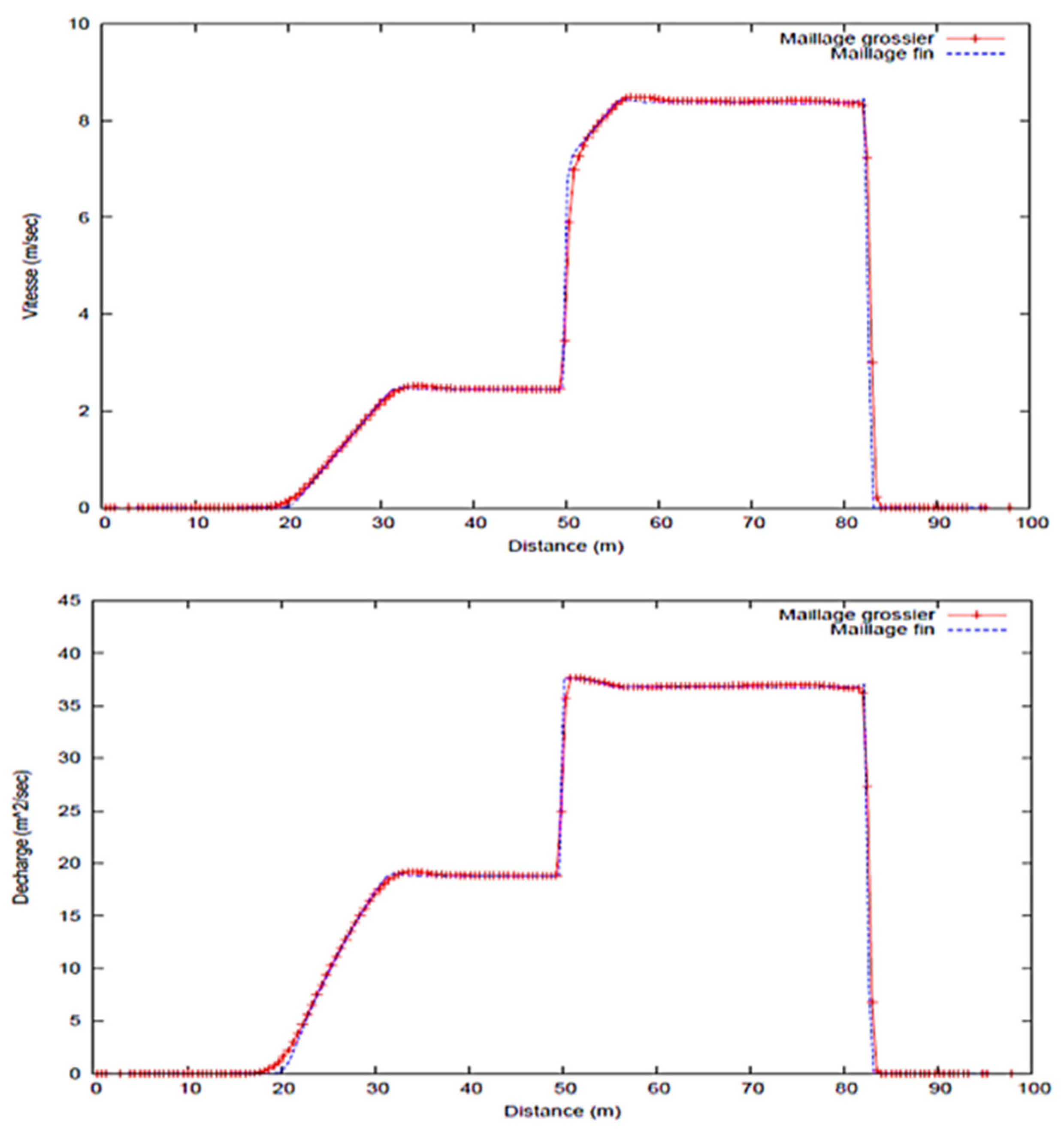
Publisher’s Note: MDPI stays neutral with regard to jurisdictional claims in published maps and institutional affiliations. |
© 2018 by the authors. Licensee MDPI, Basel, Switzerland. This article is an open access article distributed under the terms and conditions of the Creative Commons Attribution (CC BY) license (https://creativecommons.org/licenses/by/4.0/).
Share and Cite
Benslimane, M.; Benmamar, S.; Paquier, A. Two-Dimensional Shallow-Water Model with Porosity for Urban Flood Modeling. Proceedings 2018, 2, 1307. https://doi.org/10.3390/proceedings2201307
Benslimane M, Benmamar S, Paquier A. Two-Dimensional Shallow-Water Model with Porosity for Urban Flood Modeling. Proceedings. 2018; 2(20):1307. https://doi.org/10.3390/proceedings2201307
Chicago/Turabian StyleBenslimane, Malika, Saâdia Benmamar, and André Paquier. 2018. "Two-Dimensional Shallow-Water Model with Porosity for Urban Flood Modeling" Proceedings 2, no. 20: 1307. https://doi.org/10.3390/proceedings2201307




